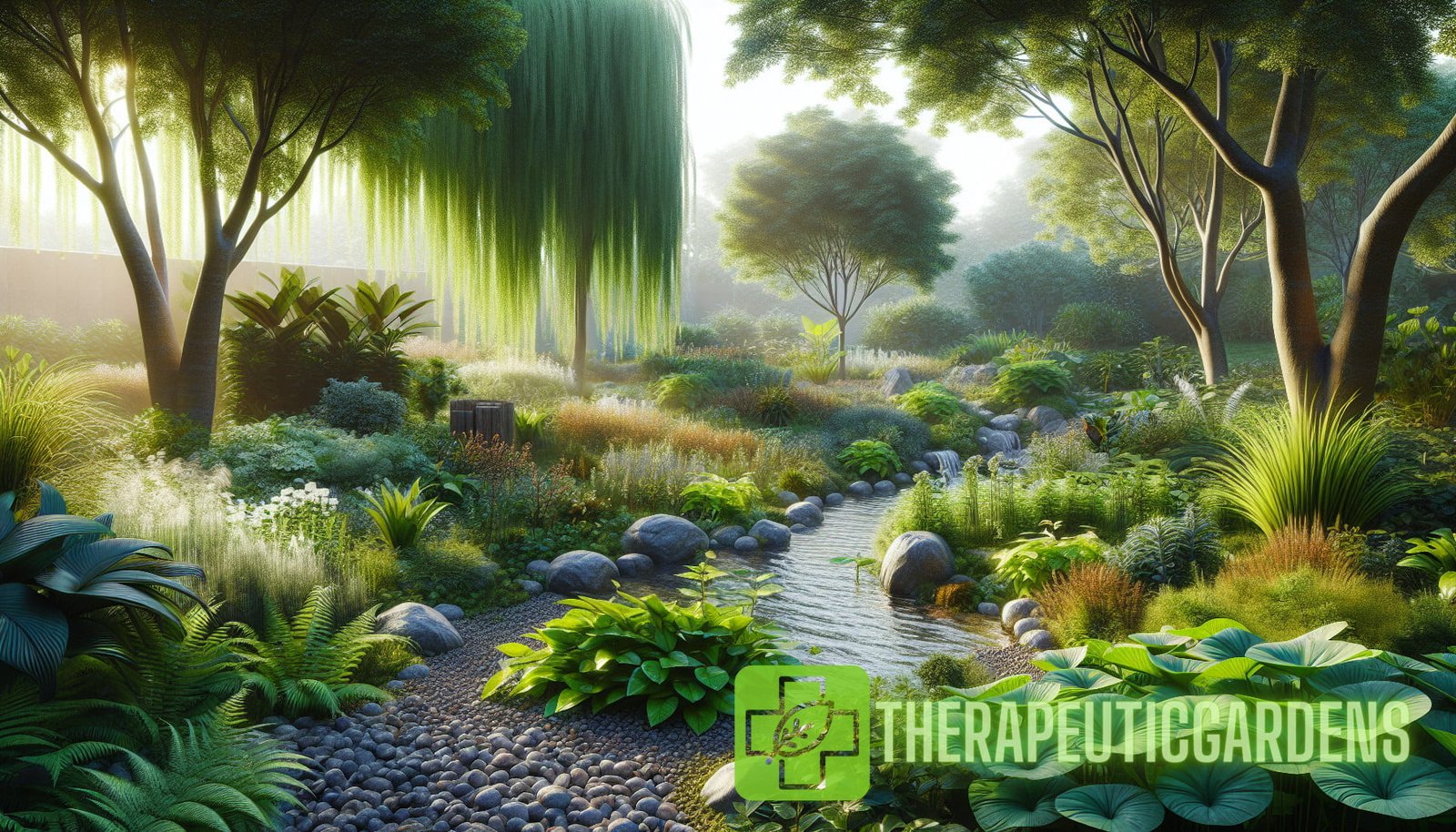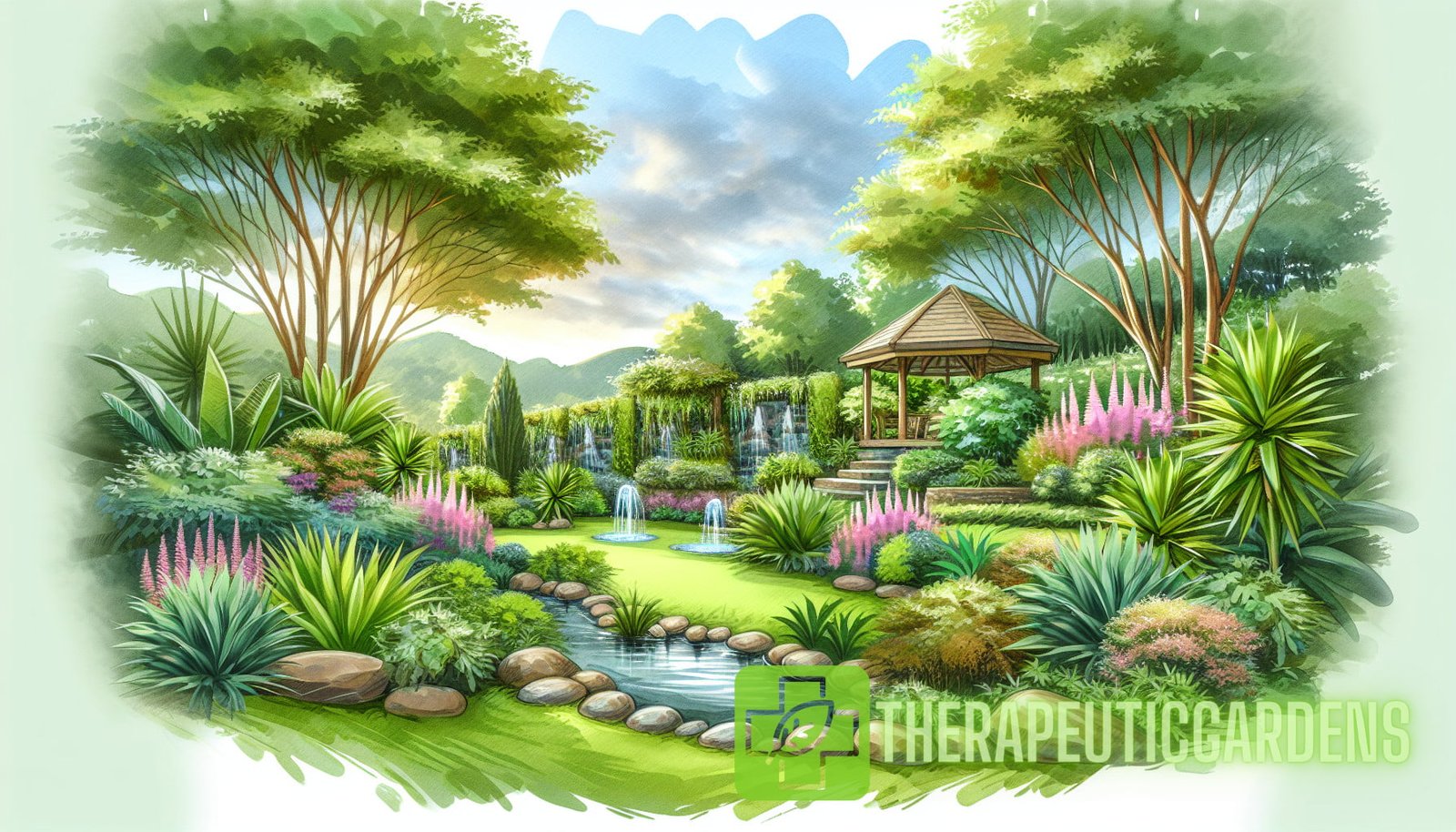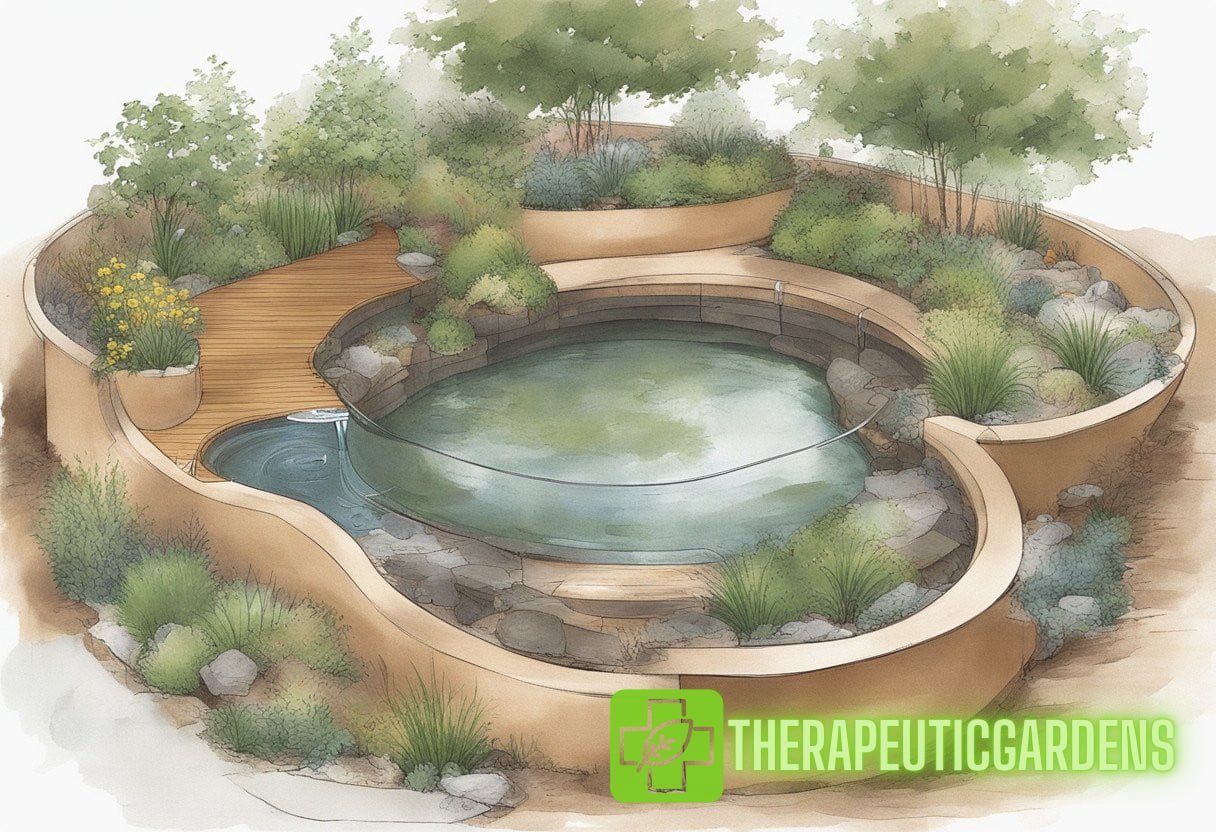Introduction
Therapeutic gardening is a practice that combines the healing power of nature with horticulture to promote physical, mental, and emotional well-being. It has gained significant recognition in recent years as a means to improve quality of life and support the overall health of individuals. However, with the growing global focus on sustainability and environmental conservation, it is essential to explore how therapeutic gardening can be practiced in a water-wise and eco-friendly manner.
In this article, we will unlock the secrets of evergreen sustainable practices in therapeutic gardening. We will delve into the importance of water conservation, the benefits of sustainable techniques, and practical strategies that can be implemented to create a water-wise therapeutic garden. By incorporating these practices, we can not only enhance the healing properties of the garden but also contribute to a more sustainable and eco-friendly future.
What is Therapeutic Gardening?
Therapeutic gardening involves the use of plants and gardening activities to improve the physical, mental, and emotional well-being of individuals. It provides numerous benefits, including stress reduction, increased physical activity, enhanced cognitive function, and improved social interaction.
Therapeutic gardens can be designed in various settings, such as hospitals, nursing homes, rehabilitation centers, schools, and community spaces. These gardens are carefully planned and curated to create a calm and serene environment that promotes relaxation, reflection, and healing.
Now, let’s explore the core principles of sustainable practices in therapeutic gardening.
Sustainability in Therapeutic Gardening
Sustainable practices in therapeutic gardening aim to minimize the environmental impact of the garden while maximizing its positive effect on individuals and communities. By adopting sustainable techniques, practitioners can ensure the long-term viability of the garden and its surrounding ecosystem.
Water-wise gardening, also known as xeriscaping, plays a crucial role in sustainable therapeutic gardening. It focuses on efficient water use, reducing wastage, and conserving this precious resource. By implementing water-wise principles, gardening enthusiasts can build gardens that are not only beautiful and healing but also eco-friendly and resilient to droughts and water shortages.
The Importance of Water Conservation
Water conservation is a pressing global concern, with many regions facing severe water scarcity and drought conditions. In therapeutic gardening, where the right amount of water is essential for plant growth and health, adopting water-wise practices can make a significant difference.
Here are some of the key reasons why water conservation is crucial in therapeutic gardening:
- Preserving natural resources: Water is a finite resource, and conserving it ensures that future generations will have access to clean and fresh water.
- Minimizing environmental impact: Wasteful water practices can lead to water pollution, depletion of natural water sources, and harm to aquatic ecosystems.
- Reducing costs: Water conservation can help individuals and organizations reduce their water bills and overall maintenance costs.
- Adapting to climate change: With the changing climate patterns and increased frequency of droughts, water-wise gardening can help mitigate the impact of water scarcity on plants and ecosystems.
By understanding the importance of water conservation, therapeutic gardeners can take proactive steps to implement sustainable and water-wise practices.
Benefits of Sustainable Techniques in Therapeutic Gardening
Incorporating sustainable techniques in therapeutic gardening brings a wide range of benefits. These techniques not only support the natural environment but also enhance the therapeutic qualities of the garden. Here are some of the key benefits of sustainable practices:
- Reduced water usage: Water-wise practices minimize water consumption by using efficient irrigation methods, capturing rainwater, and selecting drought-resistant plants. This reduces the strain on local water sources and ensures plants receive only the necessary amount of water.
- Enhanced biodiversity: Sustainable gardening techniques create habitats for diverse plant and animal species. The inclusion of native plants and the avoidance of harmful chemicals promote a healthy and balanced ecosystem within the therapeutic garden.
- Improved soil health: Sustainable practices such as composting, mulching, and using organic fertilizers enrich the soil with essential nutrients, improving its structure and fertility. Healthy soil nurtures healthy plants, which in turn support the well-being of individuals in the therapeutic garden.
- Reduced carbon footprint: By minimizing inputs such as water, energy, and synthetic fertilizers and adopting organic and low-impact methods, sustainable practices in therapeutic gardening contribute to reduced carbon emissions and combat climate change.
- Positive impact on well-being: A sustainable therapeutic garden offers a space for healing and rejuvenation. The harmonious and natural environment, free of harmful chemicals, fosters a sense of calm, relaxation, and well-being for individuals who interact with the garden.
By integrating these sustainable techniques, therapeutic gardeners can create vibrant and eco-friendly spaces that provide numerous therapeutic benefits.
Strategies for Water-Wise Therapeutic Gardening
Now, let’s explore practical strategies that can be implemented to create a water-wise therapeutic garden:
Plant Selection
Selecting the right plants is key to creating a water-wise therapeutic garden. Native plants, adapted to the local climate and soil conditions, are often the best choice. These plants have evolved to survive in the region’s natural conditions and require minimal water once established. They are also more resistant to pests and diseases, reducing the need for chemical interventions.
Here are some factors to consider when selecting plants for a water-wise therapeutic garden:
- Water needs: Choose plants that have low water requirements and can thrive in drier conditions.
- Drought tolerance: Look for plants that are naturally adapted to drought conditions and can survive with limited water.
- Native species: Opt for native plants that are well-suited to the local climate and have a natural resistance to pests and diseases.
- Soil compatibility: Consider the soil type in the garden and select plants that are compatible with its characteristics.

By carefully selecting plants, therapeutic gardeners can create a beautiful and water-wise landscape that requires minimal irrigation.
Efficient Irrigation
Irrigation is a critical component of therapeutic gardening, ensuring that plants receive the right amount of water for optimal growth and health. Implementing efficient irrigation systems can minimize water wastage and promote sustainability in therapeutic gardens.
Here are some efficient irrigation techniques for water-wise therapeutic gardening:
- Drip irrigation: Drip irrigation delivers water directly to the plant’s root zone, reducing evaporation and minimizing water loss. This method ensures efficient water use and supports plant health.
- Smart irrigation controllers: Smart controllers use weather data and soil moisture sensors to adjust irrigation schedules based on the actual needs of the plants. This prevents overwatering and enables precise water management.
- Rainwater harvesting: Installing rain barrels or cisterns allows the collection and storage of rainwater for future use. This water can be used for irrigation, reducing the reliance on municipal water sources.
- Mulching: Applying a layer of organic mulch around plants helps retain soil moisture, reducing the need for frequent watering. Mulch also suppresses weeds and improves the overall health of the garden.
- Water-efficient sprinklers: If using sprinklers, select models that are designed to minimize water wastage through adjustable nozzles and targeted watering.
By implementing these irrigation techniques, therapeutic gardeners can optimize water use and create a sustainable water management system.
Soil Health and Water Retention
Improving soil health is crucial in a water-wise therapeutic garden. Healthy soil retains moisture more effectively, reducing the need for frequent watering and minimizing water loss through runoff.
Here are some strategies to enhance soil health and water retention:
- Composting: Composting organic matter such as kitchen scraps and leaves enriches the soil with essential nutrients, enhances its water-holding capacity, and promotes beneficial microbial activity.
- Amending soil with organic matter: Incorporating well-decomposed compost and other organic amendments into the soil improves its structure, allowing it to hold water more effectively.
- Mulching: As mentioned earlier, applying a layer of organic mulch on the soil surface helps conserve soil moisture and prevent evaporation.
- Using cover crops: Cover crops, such as legumes and grasses, help prevent soil erosion, build organic matter, and improve soil structure, resulting in better water retention.
By focusing on soil health, therapeutic gardeners can create an environment that conserves water and promotes healthy and resilient plants.
Integrated Pest Management
Integrated Pest Management (IPM) is a holistic approach to pest control that minimizes the use of harmful chemicals and focuses on preventive measures and natural solutions.
Implementing IPM strategies in therapeutic gardening reduces the environmental impact of pest control while promoting the overall health of the garden. By avoiding synthetic pesticides, beneficial insects and organisms can thrive, maintaining a natural balance within the ecosystem.
Here are some IPM strategies for water-wise therapeutic gardening:
- Monitor pests: Regularly inspect plants for signs of pests or diseases and take appropriate action at the early stages.
- Encourage beneficial insects: Attract and retain beneficial insects such as ladybugs, lacewings, and bees, which help control harmful pests.
- Use cultural practices: Employ techniques such as crop rotation, proper spacing, and good sanitation practices to discourage pests and diseases.
- Implement mechanical controls: Use physical barriers, handpicking, or trapping to control pests when necessary.
- Utilize organic and natural pest control methods: Explore natural solutions such as neem oil, insecticidal soap, or companion planting to control pests without harming the environment.
By following these IPM strategies, therapeutic gardeners can create a balanced and resilient ecosystem that minimizes the need for harsh pesticides.
Conclusion
Water-wise therapeutic gardening is not only beneficial for individuals’ well-being but also for the environment and the larger community. By adopting sustainable practices, such as efficient irrigation, plant selection, enhancing soil health, and implementing IPM strategies, therapeutic gardeners can create beautiful and healing gardens that conserve water, support biodiversity, and contribute to a more sustainable future.
To learn more about effective sustainable practices for therapeutic gardening, check out this comprehensive guide available at TherapeuticGardens.store. It offers valuable insights and expert advice on building and maintaining sustainable therapeutic gardens.
By integrating water-wise principles into therapeutic gardening, we can unlock the secrets of evergreen sustainable practices, supporting both our well-being and the health of the planet.


